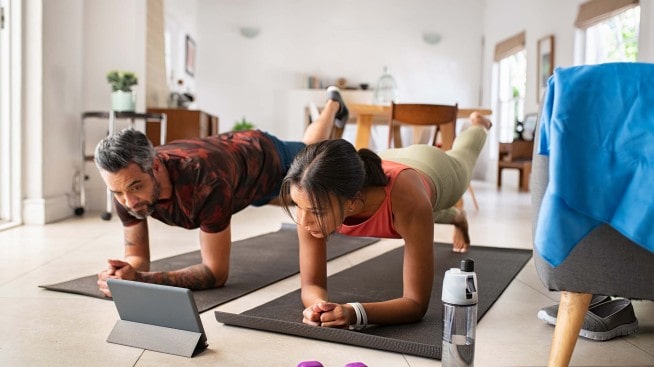Your guide to a work-from-home setup

In the last few years, the way we work has changed dramatically. Working from home has become the new norm for many, and there are quite a few perks: no morning commute, no rushing out the door to make an early meeting or rushing back home to run errands. As an added benefit, there's now more time for family, hobbies and pets. However, it can be tricky to create a space in your home that's conducive to working productively, and it starts with getting the basics right. Some items you may need to have the best work from home setup are:
- Desk
- Supportive and comfortable chair
- Laptop
- Laptop stand
- External speakers and microphone
- Reliable internet connection
- Mouse
- Keyboard
- Printer
- Stationery
How to set up your work-from-home office
Now that you have an idea of what you might need to work from home most effectively, there are some things to consider when setting up your office:
Step 1: Choose a location for your workspace
Pick a part of your home that has good lighting, enough space for all your equipment and is quiet and private. It might also be good to keep your background in mind, as you'll be taking many more video calls than you would in an office. When choosing your location, you should also make sure you have access to outlets and a strong Wi-Fi connection.
Step 2: Pick the perfect seat
Believe it or not, finding the right chair to work in is an important part of your health. When you're choosing a chair for your work-from-home setup, pick something that has an adjustable height, a supportive back and movable arm rests. Experts recommend a chair height that allows you to place your feet flat on the ground and rest your arms comfortably on your desk. Ergonomic chairs ensure you maintain correct posture while sitting, which reduces lower back and neck pain and takes pressure off your hips.
Step 3: Make sure your tech is up to date
When working from home, the technology you use can help you stay productive. If possible, use a laptop over a desktop, as it provides even more flexibility for you to move around your home. A laptop also has a built-in camera, so there won't be any need to purchase an additional webcam for a desktop. However, while your laptop will have an internal microphone and speaker system, it may not be high enough quality for the number of calls you'll now be taking remotely. Consider purchasing Bluetooth or USB speakers and a microphone to make your calls clearer and crisper.
Meanwhile, having your laptop at eye-level will make the hours you spend in front of it a bit more comfortable. Consider purchasing a stand to elevate your laptop so you're not hunched over, looking down at it all day. You can use the space below the stand to store your external keyboard and mouse.
Step 4: Set yourself up for success
In addition to the actual equipment needed for a comfortable work from home setup, think about all the other things that will make your setup as easy as possible. Keep a snack drawer in your desk for easy access to snacks and leave a coaster on your desk so you have a place to put your water or coffee. Working from home also means you have little luxuries you might not have in an office, like the ability to wear comfy slippers or keep a cozy blanket nearby to stay warm. Think of all the things you need to make sure you're motivated and productive, and then implement them in your dedicated workspace.
Work-from-home setup in a small space
Not everyone has an extra room in their home to use for an office space — sometimes, you need a room to be multifunctional. Take a look at all the nooks and crannies in your home to find a small space for a work from home setup. To get a little more function out of a smaller space, consider a floating desk or ladder desk, which aren't as wide as traditional desks but still provide shelving and storage above your computer space. There are also plenty of wall storage options available to help you take advantage of your vertical space.
A smaller space might mean a noisier one too, so it may be a good idea to invest in some noise-canceling headphones to help tune out any background noise while you're working. Also, if you have fewer options to choose from when setting up your desk, you may want to make sure you have extension cords and power strips, in case you don't have easy access to an outlet. Working from home in a small space will be much easier if you're not worrying about switching places every time your laptop's battery gets low.
If you don't have room for an additional desk chair, consider buying chair cushions to help improve the ergonomics of your kitchen chair, or whichever chair you move over to your desk for the day.
Tips for working from home
Once you have all the physical aspects of your work from home office setup worked out, it's time to think about some productivity. It can be easy to get distracted at home by your pets, kids, or chores (like that sink full of dishes). To ensure you're getting as much done at home as you would in the office, try these tips:
- Work out a written schedule with your family, including “do not disturb" hours.
- Make a to-do list at the start of each day.
- Set specific work hours and stick to them.
- Take short breaks throughout the day.
- Keep your social media checks to a minimum.
- Take your lunch break.
- Try productivity apps.
What's more
Working from home can be an adjustment but making sure your work-from-home setup is organized and well-supplied will help you remain just as productive as if you were in an office. Keep your comfort in mind and set up a space that works for you, and soon enough you won't miss going into the office at all.



